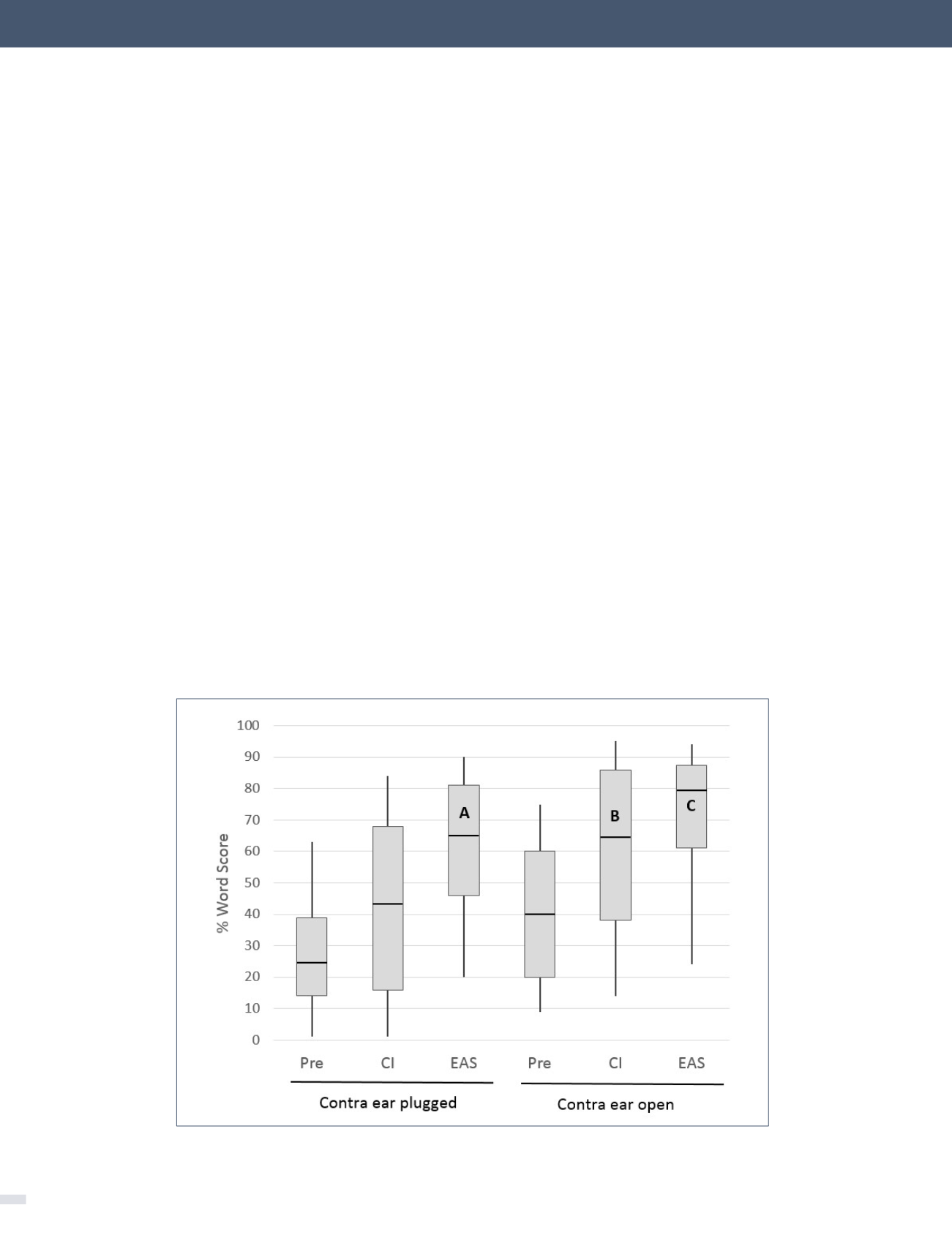
782
Functional outcomes from electro-acoustic
stimulation (EAS)
In order to satisfy general candidacy criteria (preoperative
speech understanding) as well as the audiometric indi-
cations of EAS, potential EAS users typically have more or
less symmetrical hearing losses. When there is a significant
difference between ears, the poorer ear is usually selected
for implantation in order to avoid the risk of losing the
natural hearing in the better ear. EAS users can therefore
usually utilize acoustic low frequency information from
both ears as well as the electrical signal in the implanted
ear. If hearing is lost in the implanted ear, then CI recipients
may still be able to benefit from “bimodal” stimulation, as
combination of electrical and acoustic stimulation has been
found to be effective when the acoustic input is from either
the implant or non-implant side.
The multicentre European Hybrid L study, reported by
Lenarz et al. (16) provided a clear illustration of the indi-
vidual contributions of these inputs, as many of the subjects
were tested with the ears plugged individually. The 61
study participants were postlingually deafened adults
with auditory thresholds of
<
60dBHL at frequencies below
500Hz and
>
80dBHL at frequencies above 1500 Hz. At
one year post-implantation 74% of the subjects retained
500Hz thresholds within 30dB of preoperative levels. The
electrical signal from the CI was programmed in a “non-
overlapping” fashion, with the lowest filter boundary set
close to the frequency where auditory thresholds just
exceeded 80dBHL (41). Figure 5 shows monosyllable recog-
nition performance at the 12 month postoperative interval
for 54 subjects with complete data (including any with
substantial loss of residual hearing).
Several important observations can be made from the data in
Figure 5. Firstly, for the implanted ear in isolation (the oppo-
site ear was plugged) performance in Hybrid hearing (EAS)
mode was significantly higher than that obtained using the
electrical signal alone or the preoperative (acoustic alone)
condition, demonstrating effective synergistic combina-
tion of acoustic and electrical inputs. Secondly, bars A and
B show enhancement of the CI-alone performance when
adding acoustic input from the ipsilateral or contralateral
sides respectively; approximately equivalent performance is
evident for the two conditions. It is also important to note
here that B (implanted ear plugged) indicates the range of
performance that would be achieved in any subjects who
lose all residual hearing in the implanted ear. Thirdly, bar
C demonstrates a possible further improvement in perfor-
mance when acoustic input from both sides is available
figure 5. Monosyllable recognition in quiet in a cohort of 54 Hybrid L
users preoperatively and at the 12 month interval for the CI alone and
EAS conditions
[REV. MED. CLIN. CONDES - 2016; 27(6) 776-786]
Boxes represent 25th/75th percentiles and whiskers represent 10th/90th percentiles; horizontal lines show median
values. All implanted ear scores represent performance with the opposite ear plugged. Redrawn from Lenarz et al. (16).








